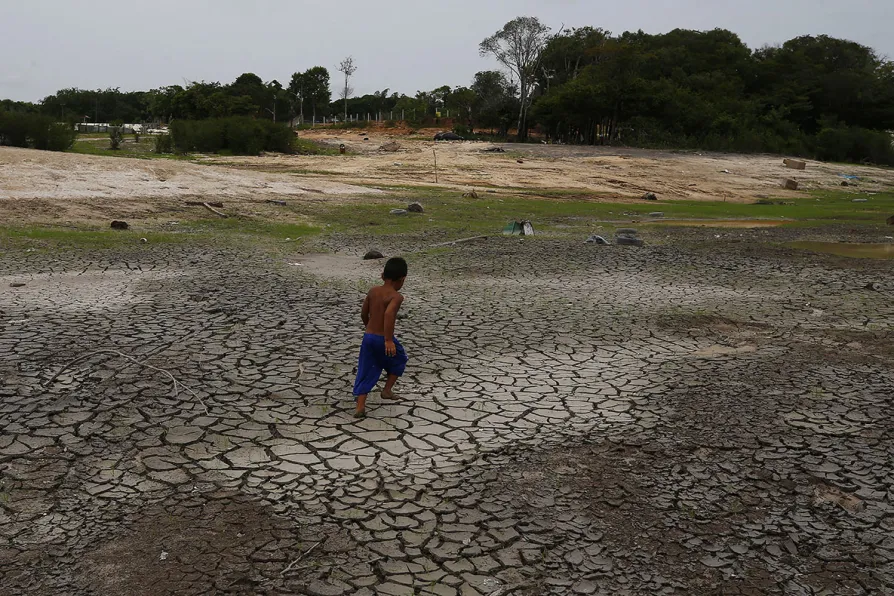Section of Amazon River reaches lowest level since records began

 A little boy walks across a dry, cracked area of the Negro River near his houseboat during a drought in Manaus, Amazonas state, Brazil, October 16, 2023
A little boy walks across a dry, cracked area of the Negro River near his houseboat during a drought in Manaus, Amazonas state, Brazil, October 16, 2023
THE Negro river, the Amazon’s second-largest tributary, on Monday reportedly reached its lowest level since official measurements began near the city of Manaus, 121 years ago.
The record confirms that this part of the world’s largest rainforest is suffering its worst drought, just a little over two years after its most significant flooding.
The water level in the city’s port went as low as 13.5 metres, down from the 30 metres registered in June 2021 — its highest level on record.
Similar stories

IAN SINCLAIR highlights a recent book chapter by climate scientist Professor Stefan Rahmstorf, who warns ‘a world full of horrors’ can expected if climate catastrophe is not averted













